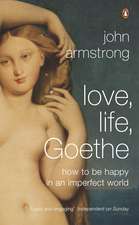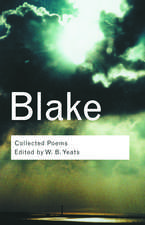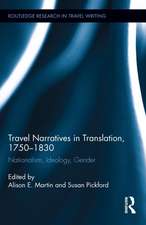Shakespeare and the Versification of English Drama, 1561-1642
Autor Marina Tarlinskajaen Limba Engleză Hardback – 25 sep 2014
| Toate formatele și edițiile | Preț | Express |
|---|---|---|
| Paperback (1) | 403.70 lei 6-8 săpt. | |
| Taylor & Francis – 13 dec 2021 | 403.70 lei 6-8 săpt. | |
| Hardback (1) | 1011.33 lei 6-8 săpt. | |
| Taylor & Francis – 25 sep 2014 | 1011.33 lei 6-8 săpt. |
Preț: 1011.33 lei
Preț vechi: 1233.33 lei
-18% Nou
Puncte Express: 1517
Preț estimativ în valută:
193.52€ • 202.46$ • 160.76£
193.52€ • 202.46$ • 160.76£
Carte tipărită la comandă
Livrare economică 02-16 aprilie
Preluare comenzi: 021 569.72.76
Specificații
ISBN-13: 9781472430281
ISBN-10: 147243028X
Pagini: 424
Ilustrații: Includes 29 b&w illustrations
Dimensiuni: 156 x 234 x 24 mm
Greutate: 0.77 kg
Ediția:New ed.
Editura: Taylor & Francis
Colecția Routledge
Locul publicării:Oxford, United Kingdom
ISBN-10: 147243028X
Pagini: 424
Ilustrații: Includes 29 b&w illustrations
Dimensiuni: 156 x 234 x 24 mm
Greutate: 0.77 kg
Ediția:New ed.
Editura: Taylor & Francis
Colecția Routledge
Locul publicării:Oxford, United Kingdom
Cuprins
1 Why Study Versification? Versification Analysis; Tests
2 How It All Began: From Surrey's Aeneid to Marlowe's Tamburlaine
3 Early Elizabethan Playwrights: Kyd, Marlowe, Greene, Peele, Early Shakespeare. 2, 3 Henry VI and Arden of Faversham
4 Shakespeare's Versification: Evolution. Co-Authored Plays. The Poem A Lover's Complaint
5 Jacobean and Caroline Playwrights: From Shakespeare to Shirley
6 Conclusions: Shakespeare and Versification, 1540s - 1640s
Appendix A: Verse Form and Meaning: Rhythmical Italics
Appendix B: General Tables B.1 - B.16
2 How It All Began: From Surrey's Aeneid to Marlowe's Tamburlaine
3 Early Elizabethan Playwrights: Kyd, Marlowe, Greene, Peele, Early Shakespeare. 2, 3 Henry VI and Arden of Faversham
4 Shakespeare's Versification: Evolution. Co-Authored Plays. The Poem A Lover's Complaint
5 Jacobean and Caroline Playwrights: From Shakespeare to Shirley
6 Conclusions: Shakespeare and Versification, 1540s - 1640s
Appendix A: Verse Form and Meaning: Rhythmical Italics
Appendix B: General Tables B.1 - B.16
Notă biografică
Marina Tarlinskaja is Research Professor of Linguistics at the University of Washington, USA.
Recenzii
'Tarlinskaja has long been recognized as the world's authority on Shakespeare's versification. Providing a thorough history of iambic pentameter in and around the commercial theaters of early modern England, her book illuminates Shakespeare's achievement by locating him within the rhythmic environments of his day. The breadth and depth of this book are remarkable: from the sixteenth century through the closing of the theaters, all of the major playwrights come in for examination; statistical figures for their works are assembled in a central table. The result is likely to help revive the study of Shakespeare's versification even as it adds to our understanding of how, and when, his contemporaries wrote their plays." --Douglas Bruster, University of Texas, Austin, USA
"An important scholarly work that will be read for years to come." --Brian Vickers, Books of the Year 2014, Times Literary Supplement
'This book offers (among other things) an extraordinary wealth of information on (and discussion of) the distribution of lexical stress and syntactic breaks in the iambic pentameter of Renaissance English drama: there are just under a hundred pages of statistical tables alone. This makes it an invaluable resource not only for attribution research but also for studies of the development and chronology of individual poets." --Review of English Studies
"A remarkable study, the book includes a considerable amount of statistical data which are valuable not only for this book, but also to future researchers." --Studia Metrica et Poetica
"Beyond attribution, [Tarlinskaja's] findings will intrigue those whose interests are more literary critical and theoretical, here she thoroughly contextualizes Shakespeare's own versification alongside that of his predecessors and peers." --Times Literary Supplement
"[Shakespeare and the Versification of English Drama] differs from her previous landmark books in that it directly tackles more than twenty of the knottiest authorship questions from the period…SVED offers a trove of twenty-odd new verdicts." --Ward Elliott, Claremont McKenna College (emeritus), Modern Philology
"An important scholarly work that will be read for years to come." --Brian Vickers, Books of the Year 2014, Times Literary Supplement
'This book offers (among other things) an extraordinary wealth of information on (and discussion of) the distribution of lexical stress and syntactic breaks in the iambic pentameter of Renaissance English drama: there are just under a hundred pages of statistical tables alone. This makes it an invaluable resource not only for attribution research but also for studies of the development and chronology of individual poets." --Review of English Studies
"A remarkable study, the book includes a considerable amount of statistical data which are valuable not only for this book, but also to future researchers." --Studia Metrica et Poetica
"Beyond attribution, [Tarlinskaja's] findings will intrigue those whose interests are more literary critical and theoretical, here she thoroughly contextualizes Shakespeare's own versification alongside that of his predecessors and peers." --Times Literary Supplement
"[Shakespeare and the Versification of English Drama] differs from her previous landmark books in that it directly tackles more than twenty of the knottiest authorship questions from the period…SVED offers a trove of twenty-odd new verdicts." --Ward Elliott, Claremont McKenna College (emeritus), Modern Philology
Descriere
Surveying the development and varieties of blank verse in the English playhouses, this book is a natural history of iambic pentameter in English. Marina Tarlinskaja’s statistical analysis of versification focuses on Shakespeare, but places his work in the literary context of the times. Her results offer new ways to think about the dating of plays, the attribution of anonymous texts, and how collaborators divided their task in co-authored dramas.

















